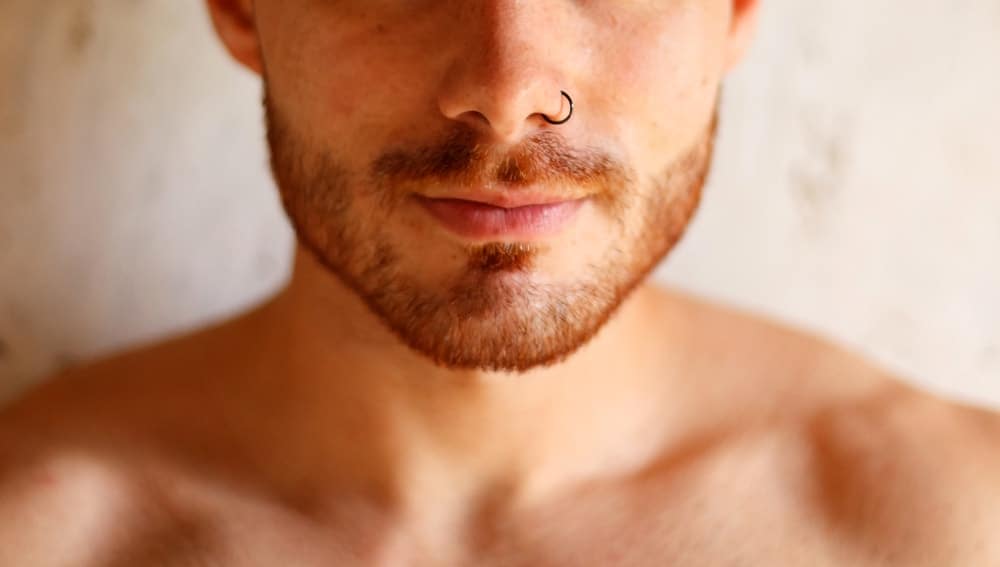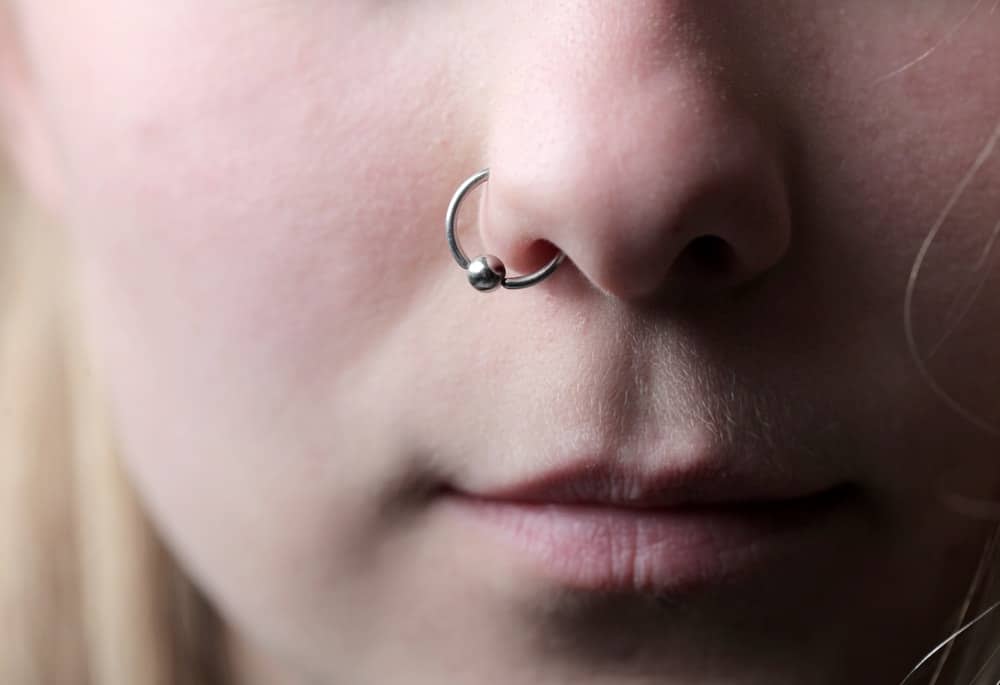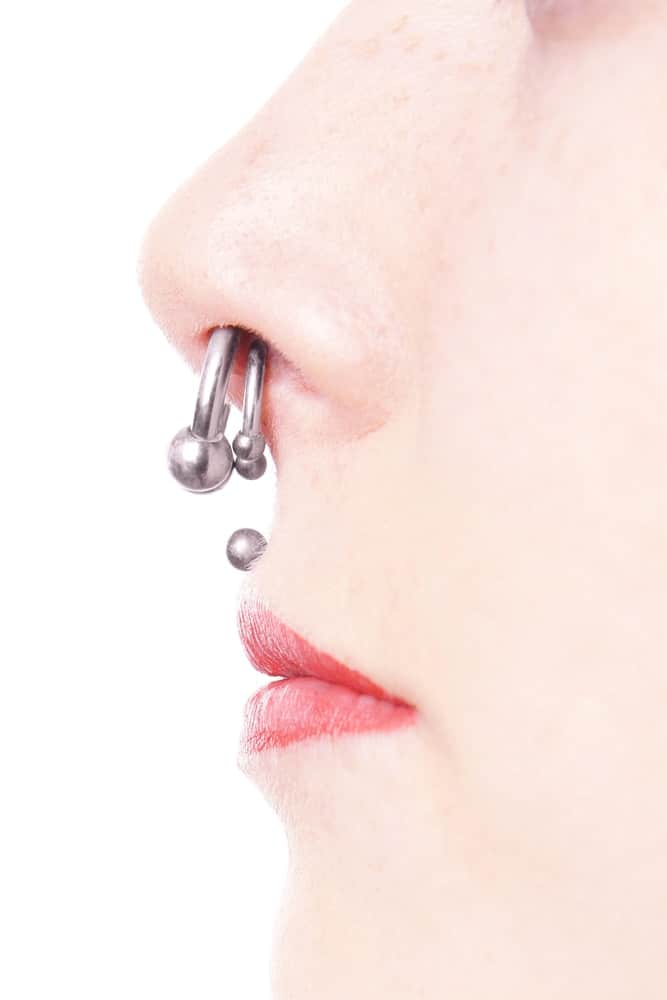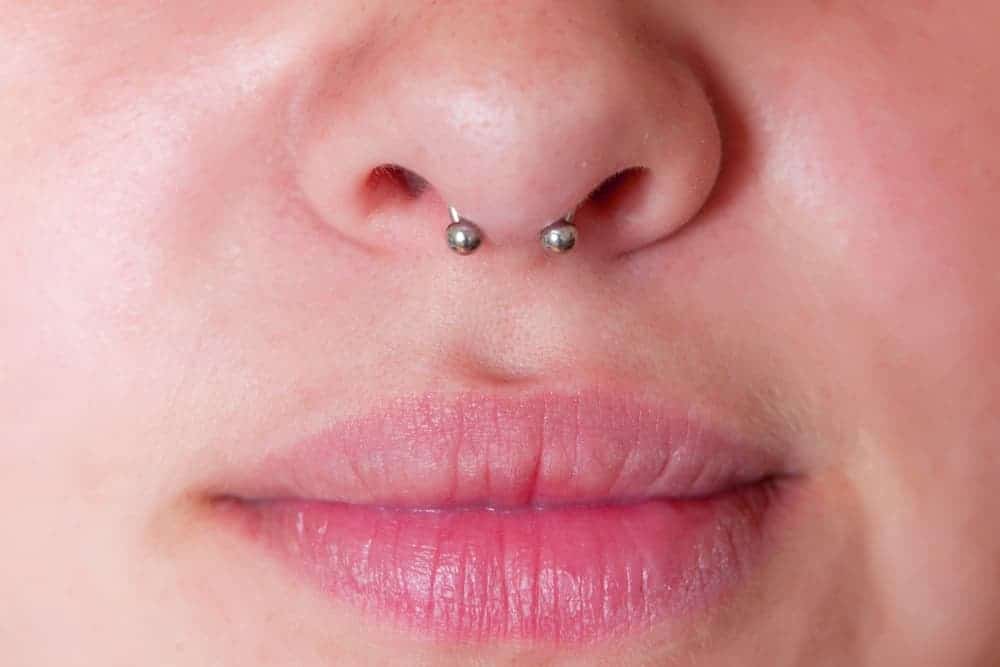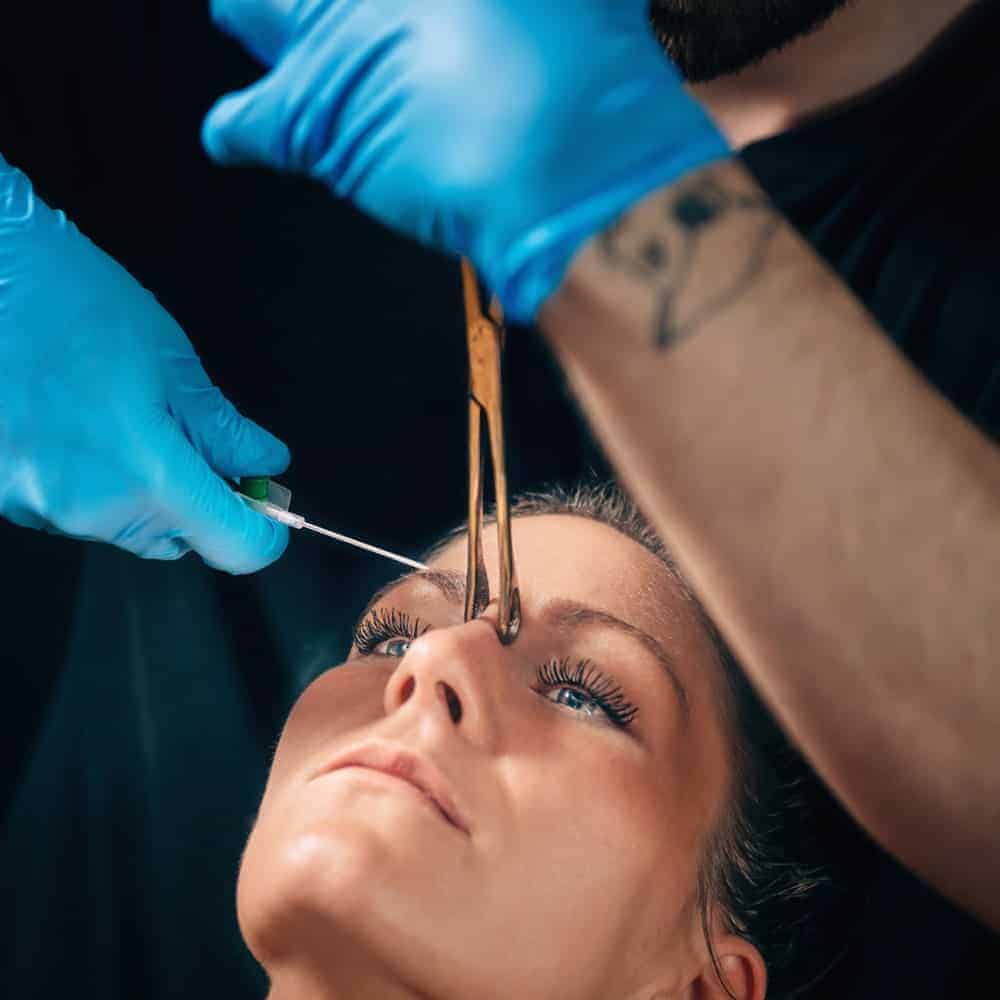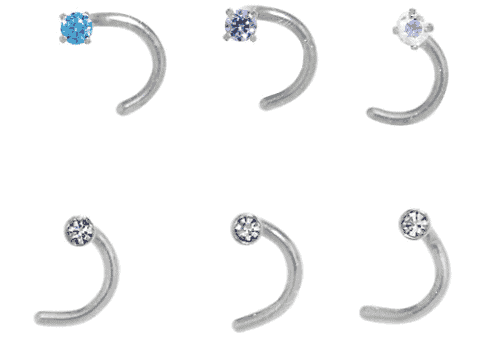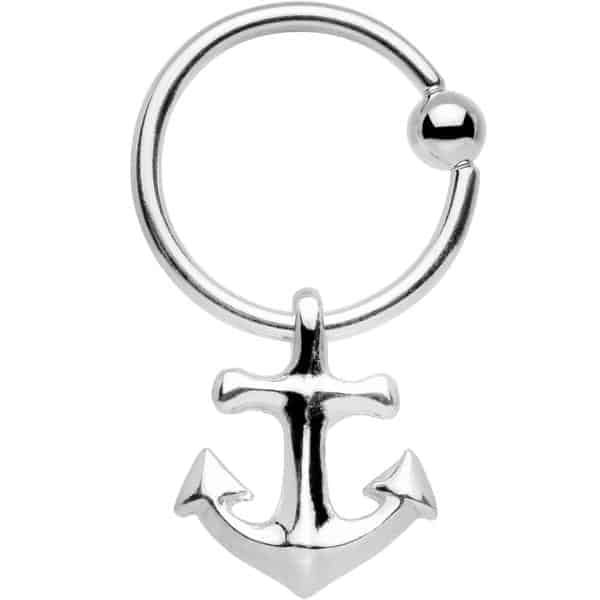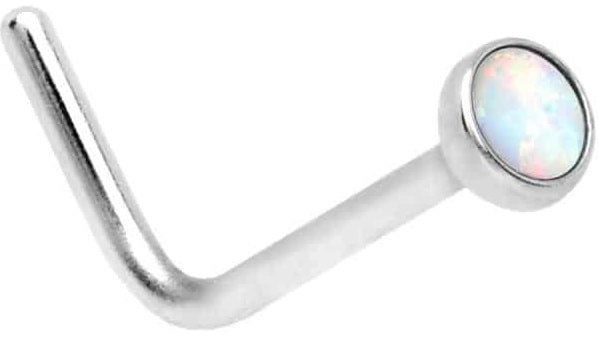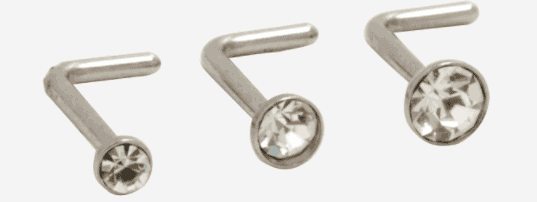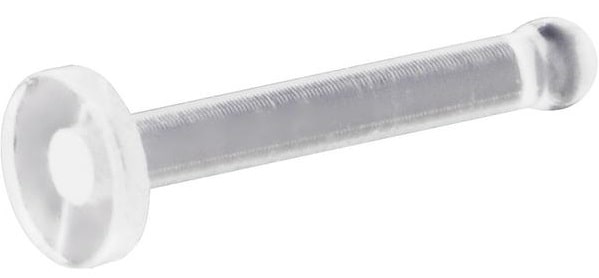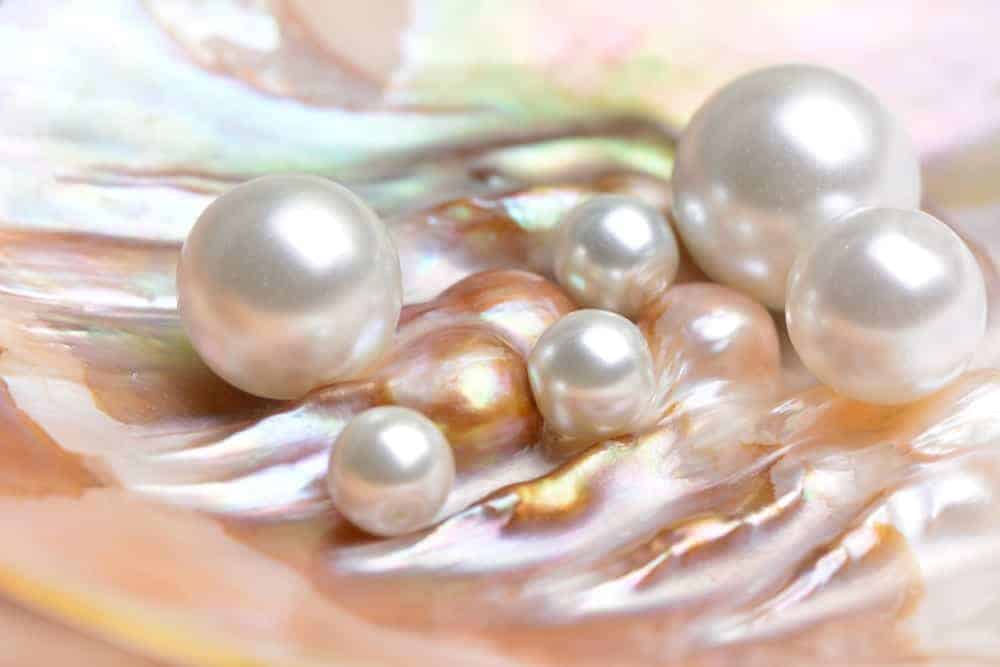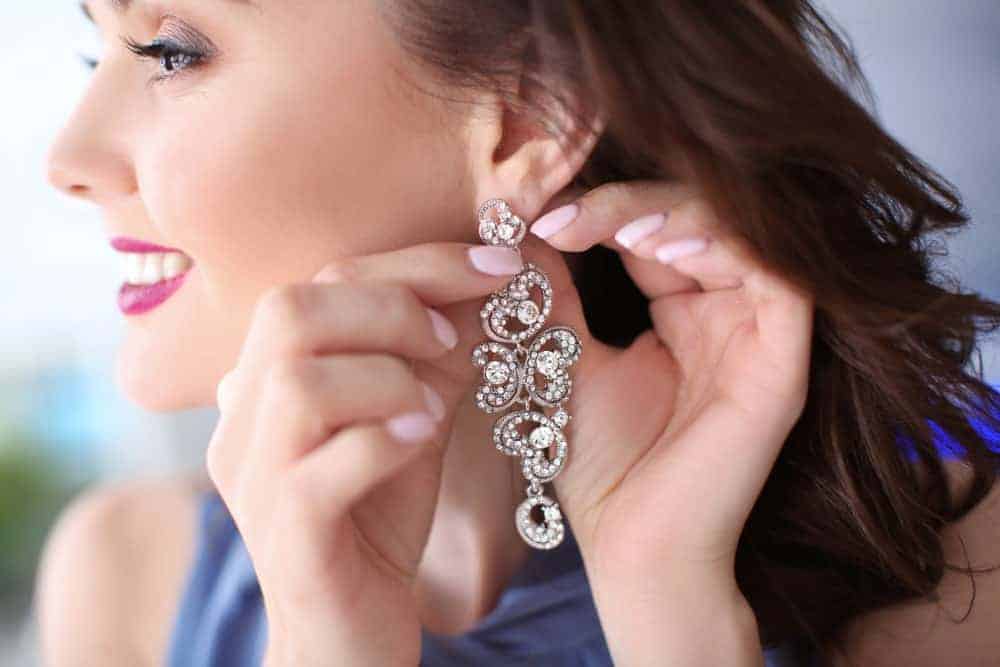Nose piercing is the oldest among the types of piercings. Discover the different types of nose piercings for different nose sizes and jewelries.
The history of nose piercing travels back to 4,000 years ago and started in the Middle East to India. It took thousands of years before the practice became common in the Western world.
In the Middle East and Africa’s Berber and Beja tribes, men gave gifts of golden nostril rings to their future wives as part of an insurance and an indication of wealth. In India, women pierced their left nostrils based on the ancient Indian natural healing system Ayurveda which teaches that doing so would alleviate menstrual cramps and childbirth pains.
The Key Types/Locations
The Nostril Piercing
The nostril piercing is an extremely basic and one of, if not the most, common nose piercings that you can get. Situated on the nostril, of course, the jewelry typically sits just above where your nose curves away from your cheek.
The exact location may vary on the person as people will have different nose structures and aesthetic preferences. However, this location is easily accessible and spacious, which is why the nostril piercings will have the widest range of jewelry options. Apart from simple pieces of jewelry, nostril piercings also allow for studs, nose rings, ball rings, nostril screws, and more.
The Double Nostril Piercing
Similar to the single nostril piercing is the double nostril piercing, which involves the insertion of the second piece of jewelry above the crease of the nostril. As you put more holes into your nostril, your options grow increasingly limited.
When creating more holes, piercers have to be careful about nerves and other things that might influence the position of the piercings. Seen as a more adventurous piercing, you can put studs, nostril screws, nose hoops, and other pieces of jewelry into your double nostril piercing.
The Triple Nostril Piercing
Even more adventurous yet, the triple nostril piercing is another variation of the nostril piercing that involves a third hole and piercing. Again, piercers must be careful about nerve structures; if you are seeking a triple piercing, it would be best to receive one from a skilled professional.
These are commonly arranged in a triangular pattern, mostly out of convenience and style, and studs are the easiest type of jewelry to place in a triple nostril piercing.
Claire’s is a well-known nose ring seller and you can find all of the nostril piercing equipment you need here.
High Nostril Piercing
This is another variation of the nostril piercing and, as you may have guessed, this one involves piercing an area high up on the nostril. Whereas the nostril piercings are located just above, on, or even below the crease, high nostril piercings are roughly a quarter-inch higher.
These are a bit bolder than the traditional nostril piercings and offer a more unique look but the jewelry options are rather limited. Typically you will get studs but you can also get away with nostril screws and L-shaped pins. Due to the location, you would also want to seek a skilled piercer to carry out the piercing.
Septum Piercing
They aren’t exactly the most common but they are certainly trendy, especially these days. The septum piercing is positioned in between the nostrils near where the cartilage divides the nostril. However, the actual piercing won’t be on the cartilage itself.
There is a small gap between the bottom of your nose and the cartilage that piercers look for to make the piercing. There are specific pieces of jewelry that are meant for the septum piercing and you can usually choose between captive bead rings and barbells, though gauges are also possible.
Bridge Piercing
On the opposite end of your nose is where you will find the bridge piercing. Another name for the bridge piercing is the surface piercing as the piercings don’t actually puncture bone or cartilage.
For that reason, however, they are also prone to something called migration, which is where your body essentially rejects the piercings and naturally pushes them out of your skin. Bridge piercings are located at the top of your nose (the bridge) and they are typically curved barbells or circular barbells.
Vertical Tip Piercing
It’s not very common and for that reason, the vertical tip piercing has a pretty unique look. Using a curved barbell (the only option), piercers will place one bell end just under the center of your nose and put the other end right on the tip of your nose.
Septril Piercing
A genuine septril piercing involves the gauging of your septum, which actually takes a bit of time to achieve. Among all of the different nose piercings, the septril piercing will likely be the most difficult and, unfortunately, the most painful.
Depending on the structure and position of your septal cartilage (it can be different for everybody), making that gauge happen can cause definitely some discomfort.
Additionally, achieving the full septril piercing can take years to achieve and you will want to make sure that both you and your piercer are prepared to make it happen. However, the septril has certainly gained some traction as a body piercing trend.
Nasallang Piercing
Similar to the septril piercing, the nasallang piercing is more complex than it appears on the outside. The outside gives the impression of two symmetrical nostril piercings but the nasallang is actually a straight barbell piercing that goes from one side to the other, passing through the septum on the way. It’s called a tri-nasal piercing but the process is usually completed all at once and with a single needle.
Austin Bar
The Austin bar is a piercing that is similar to the nasallang. The only significant difference is that the bar doesn’t pass through the septum. As with the nasallang, the Austin bar uses a straight bar, though here it may be shorter in length. The Austin bar also has a similar look where there is a bead on both sides of your nose but here the beads will be closer together and the bar goes through the squishy part of the tip of your nose.
Styles
Nose Screws
Source: HOT TOPIC
Nose screws (nose studs, nose twisters, or nose hooks) are short, hooked inserts aptly named for the way that you have to “screw them in”. As a curved piece, you simply have to twist it a bit for it to insert fully into the nose.
Depending on the nostril that you pierced, you may need a right bend or a left bend, which will also tell you which way to twist it as you insert it. The curve works as a backing that holds the piercing in place so that it doesn’t fall out. The nose screw is arguably the most common type of nose ring but it will not be applicable to all piercing types.
Nose Hoops
Source: Urban Body Jewelry
Nose hoops are just circular piercings and there are several different subtypes, including seamless segment rings, captive bead rings, and closure rings. Most standard nose hoops are worn for nostril piercings and they are intended to be snug to the nose, meaning a small diameter.
Nose hoops typically have an open end with a small flat disc that rests inside the piercing but other hoop styles will be designed a little bit differently. Nose hoops, while available in plenty of colors, are more noticeable than something such as a stud and have fewer options as far as decoration.
Captive Bead Ring
Source: BodyCandy
A captive bead ring is very similar to a nose hoop but the difference between the two is that the captive bead ring completes the circle. Where nose hoops typically have an opening in between the bead and the other end, a captive bead ring is fully closed, hence the name”captive bead”.These are commonly used in the septum areas and they can be somewhat difficult to remove compared to the other kinds of piercings.
Horseshoe Barbell
Source: BodyCandy
Closely related to the hoop style, the horseshoe barbell is commonly worn as a septum piercing but you can also wear it as a nostril piercing. The difference is that the horseshoe piercing never makes the full circle, such as a horseshoe; instead, the two ends are beads that are reminiscent of the barbell look.
Typically, the beads at each end are removable so that the piercing itself can be removed if necessary or whenever you want to change your look. As well, the beads are also available in different shapes such as cubes, triangles, cones, and cylinders, among others.
While these types of piercings have an opening, they are typically situated upside down so that the opening points towards the floor, which also means you can buy one without the beads and you don’t have to worry about anything falling out.
You can find a pretty wide selection of nose rings, including septum rings both with beads and without at Etsy.
The Straight Barbell
If you take the horseshoe barbell and straighten it out, you essentially have the straight barbell, a straight bar with a single bead at both ends. Again, one or both of these beads will be removable so that you can take the piercing out or swap out the beads for something more stylish. The straight bars are the ones you must use for the nasallang piercing where the beads will come out on both sides of your nose.
Fishtail
The fishtails are extra-long straight nose rings that are made specifically to be custom fitted by a professional. Fishtails are typically for individuals who can’t seem to find a standard nose ring that fits them comfortably.
With a fishtail, you can have the size and shape customized by a professional piercer but these are usually transformed into l-shaped piercings or nose screws. Keep in mind that fishtail piercings lack any bulb or shaping, to begin with, meaning that they can’t be worn as-is.
L-Shaped
Source: BodyCandy
L-shaped nose rings are fairly popular because they are usually snug and the “L” shape that it has puts the ninety-degree angle on the inside of your nose so there is no worrying about the piercing falling out. They are also relatively small, which makes them easy to insert.
You can find L-shaped piercings in a wide variety of styles and colors. They are easily made from fishtail piercings so if you can’t find an L-shape that fits you comfortably, you can use a fishtail instead. Depending on which nostril you are doing, L-shaped piercings are made specifically for the right and for the left.
A Nose Bone
Source: HOT TOPIC
The nose bone is a decorative top connected to a short stem with a ball at the end. It’s a very simple but effective style and the ball shape at the end prevents the piercing from falling out. The straight piece is usually about six or seven millimeters in length and people enjoy wearing nose bone piercings because they are comfortable and easily removable.
They should be flush against the skin and virtually unnoticeable as far as the interior of your nostril goes. These are also referred to as studs and given their simple design, they are also available in a number of colors and styles.
Retainers
Source: BodyCandy
If you are working a job or heading to an event where nose piercings aren’t accepted or are perhaps frowned upon, you can grab a retainer. These are typically made out of different materials and they aren’t always meant to be worn for the long term.
If you allow the pierced hole to close up, you will have to start all over again but retainers allow you to maintain the hole if you have to remove the jewelry temporarily. You can buy these in clear materials or maybe even find a skin color so that once you put it in, it won’t be as noticeable.
HOT TOPIC has a handful of different retainers that you can purchase and you will be able to do this by visiting the store or by checking them out here.
Materials
Surgical Stainless Steel

Surgical stainless steel is arguably the most common material used for piercings and nose piercings and the reason is that it’s safe to go inside of the body. Surgical stainless steel, as the name suggests, is commonly used in biomedical procedures. Given its ability to go inside of the body without issue, it makes a great material for piercings.
However, this is only true for type 316 or what is called marine grade. The other two types are 440 and 420, which have high amounts of carbon and are more commonly induce allergies. The material is easy to clean but it can also be heavy, which can be a drawback.
Surgical Implant-Grade Titanium

If you are using titanium, you want to make sure that it is implant grade. This is high-quality titanium as lower-quality titanium may irritate your pierced area and cause an allergic reaction. Titanium, as opposed to the steel, is lightweight and doesn’t contain nickel, which can be an allergen for some.
Titanium also comes in a number of different colors including silver, yellow, green, blue, or purple but not black or red. While the colors do fade, they shouldn’t cause any irritation.
Urban Body Jewelry has an assortment of both titanium and stainless steel piercing jewelry of all kinds, and you can find them here.
Acrylic

Acrylic is a material that is used for piercings but it is far from ideal and many people specifically avoid acrylics for piercing materials. They are not ideal for unhealed piercings, those that have been recently stretched, or for long-term wear.
They are most commonly used for plugs and tapers. The material itself isn’t very durable and can even shatter. Not to mention, acrylics emit different toxins in certain temperatures and can even collect bodily fluids.
PTFE

Teflon is the brand name for PTFE materials, which is a flexible plastic that is both lightweight and commonly used for piercing retainers. You can feel free to use this for both unhealed and brand-new piercings as it is perfectly biocompatible. Unlike steel and similar to titanium, PTFE won’t be magnetic and it can be cleaned with all of the normal cleaning methods including autoclave, alcohol, and even soap and water.
Bioplast

Another biocompatible plastic is bioplast and people use this because it is extremely lightweight and flexible. Additionally, however, bioplast materials have also been shown to speed up healing times of piercing holes. For that reason, you will commonly see it being worn like a retainer.
Still, it can be an alternative if you are having trouble getting your piercing to heal or standard materials are consistently causing irritation. Unlike acrylic, the bioplast is hypoallergenic with a non-stick outer shell, which also makes cleaning far easier. There really aren’t any negatives to wearing bioplast other than the fact you don’t get to wear something fancy such as gold or silver.
Nose rings with alternative materials such as bioplast can be found in all sorts of places and you can find them here at Body Candy.
Implant-Grade Silicone
While you shouldn’t use them for unhealed piercings, they can work if you are sensitive to metals or aren’t having success with other materials for whatever reason. Silicone is very soft and flexible, meaning that it will likely feel more comfortable, but do make sure that it is implant grade.
If you choose silicone, you will have the option to pick between colors. Since silicone may collect dust and other particles more easily than other materials, make sure that you clean it often.
Gold

You might think that any gold can be worn as jewelry but there are some specifics to keep in mind. You would only want to wear 14K to 18K gold as a piercing; that is if you are interested in pure, quality gold that won’t cause any issues.
Anything under 14K won’t be pure enough and anything above 18K gold will be soft, which means that it can be easily scratched. Scratches are bad news for pierced jewelry as you open up a door for bacteria and infections.
The only fear using gold that is under 14K is that it might contain additional materials that will be irritating to your piercing. Gold will also have a more specific cleaning process, which is typically just soap and water.
Alluring Body has a nice selection of nose rings up to 18k, including gold hoops, white gold, and even diamond and you can check those out here.
Silver

Silver is obviously a notorious material for jewelry, similar to gold, but silver isn’t as viable an option for an unhealed piercing. Silver is more prone to oxidation and tarnishing, which may cause allergies and other damages to the pierced area.
High-quality silver, in general, should not be worn for too long so you can usually use it for special occasions. While there are silver nose rings out there, it is sometimes ill-advised to keep silver in areas with mucus for too long. Short-term silver jewelry is harmless but long-term silver jewelry can be dangerous, especially if oxidation takes place.
Size
See our detailed nose ring sizing charts here (PDF Download included)
Gauge
The gauge of the body jewelry refers to the thickness of the item or, in other words, the size of the hole that your piercer pierced. You can use this information to buy the appropriate size of the nose rings. While smaller sizes may wind up being loose and uncomfortable, you can sometimes force a larger size though if you happen to buy one accidentally.
The gauge size that you see with most likely be a solid number. The most common range from 12 gauge to 22 gauges but keep in mind that the bigger the number, the smaller the gauge.
For example, a 20-gauge nose piercing is 0.8 mm while a 12-gauge piercing is a whole 2 mm. So, if you are looking for something extremely minor and not too flashy, you would likely opt for something such as a 20 gauge. Smaller piercings may also be wise if you plan on getting multiple piercings.
Length
In addition to the thickness, you will also want to pay attention to length. The length of the piercing, usually shown in millimeters, will affect the comfort of your piercing. Piercings that are too long may poke the inside of your nose and in these situations, you may want to invest in a fishtail ring.
Diameter
The diameter refers to the size of your hoops or your curved and horseshoe barbells. The two most common sizes are 5/16in and 3/8in or 8mm and 10mm, respectively. However, you can often get as high as 9/16in and as small as 1/4in. Keep in mind that nostril rings are usually intended to be snug but with something such as a septum ring, you may get away with larger diameters.

